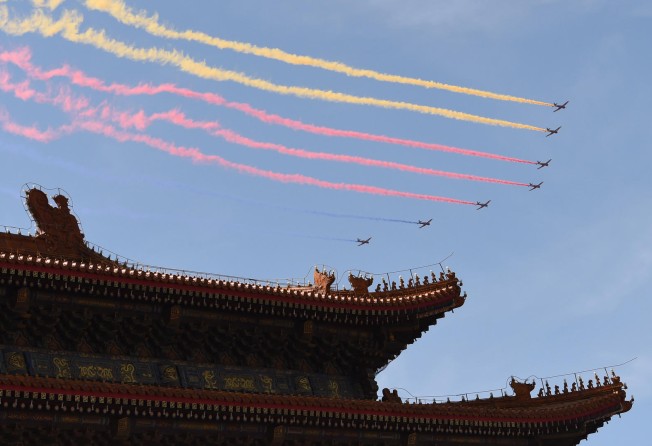China's display of military might much more than mere muscle-flexing
Sonny Lo says the line-up of modernised weapons and announcement of cuts to the PLA reflect the internal and external complexities of a new diplomacy

China's military parade last week had significant implications for its military diplomacy: for the first time, it is using its military modernisation to achieve two seemingly contradictory goals.
On the one hand, the military will become more elite, with a better balance of land, naval and air forces. Simultaneously, Beijing will shift demobilised soldiers to the paramilitary police force, which will be integrated into a newly formed national security guard. Clearly, part of the modernisation is to upgrade the national security guard, which will play a major role in safeguarding domestic security, especially dealing with riots and terrorism. In terms of protecting domestic national security, the move is a watershed.
On the other hand, the trimming of the People's Liberation Army was aimed at sending a signal to the outside world that China remains militarily defensive and that a peaceful path of development continues to be the hallmark of its foreign policy.
While some foreign countries view China's military parade as a move to flex its military muscles, they fail to see that China remains internally fragile, particularly given the recent stock market turmoil and its economic downturn that is affecting consumer spending of mainland Chinese, both domestically and regionally. That is having a significant effect on the economies of Macau and Hong Kong.
While critics argue that China should be looking forward, history remains extremely important in the minds of the top Communist Party leaders.
Internally, the parade took on significance after the extensive purges of corrupt generals in recent months. The new military leadership that led the troops in the parade signalled to the people that the era of an uncorrupt, elite and modernised military is looming.
The parade was also aimed at an international audience. With South Korean President Park Geun-hye and Russian President Vladimir Putin standing at the viewing gallery, President Xi Jinping appears to be stressing China's role as a middleman in international relations, not least between the two Koreas, and that the Sino-Russian partnership remains a crucial force balancing the US-Japan alliance.
The presence of many Central and South Asian leaders on the viewing platform was equally significant. China attaches great importance to the Central Asian states which, in the mind of Beijing, play an indispensable role in the fight against terrorism, which has affected the stability of western Xinjiang .
The participation of the Pakistani, Afghan and Russian militaries in the parade also showed the necessity of maintaining good relations with these neighbours, which will pave the way for China's "One Belt, One Road" policy.
The showcasing of Chinese-made weapons, while demonstrating the fruitful result of military modernisation, was also aimed at the potentially huge export market.
The military parade came as Japan was engulfed in a heated domestic dispute over legislative changes designed to give the Japanese army limited powers to engage in foreign combat for the first time since the second world war. A package of bills has been passed by the lower house but are opposed by many Japanese people.
The Chinese message to Japan is clear: its leaders must reflect on the mistakes made during the war and they must not engage in any move construed as a revival of Japanese military "imperialism". Ironically, under US support, Japan's leaders are drifting towards remilitarisation in order to tackle the so-called "China threat".
Regardless of Xi's efforts to emphasise his nation's peaceful nature and outlook, the military parade was always going to be seen by some as China flexing its muscles. Yet, this outdated and biased view neglects the complexities of the new Chinese military diplomacy.
Professor Sonny Lo is head of the department of social sciences at the Hong Kong Institute of Education